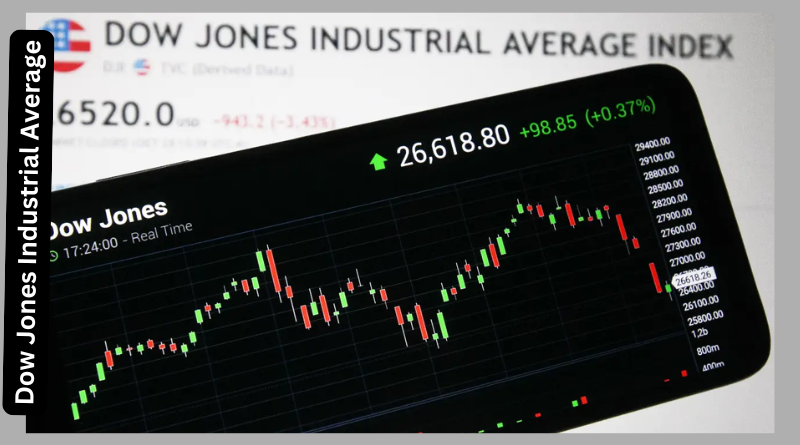The Significance of Nvidia Replacing Intel in the Dow Jones Industrial Average
Nvidia is set to replace Intel in the Dow Jones Industrial Average, according to an announcement from S&P Dow Jones Indices made on Friday. This significant change highlights Nvidia’s expanding dominance in the competitive AI landscape, positioning it ahead of other major tech players.
Though the official transition will take place just before the market opens on November 8, the impact is already being felt in the stock market. Nvidia’s shares surged nearly 3% in after-hours trading, while Intel’s stock saw a decline of nearly 2%.
Both Intel and Nvidia representatives chose not to comment when approached by Business Insider.
In a detailed analysis, Emma Cosgrove, a senior reporter at Business Insider who specializes in Nvidia, GPUs, and the AI industry, explores the profound implications of this shift within the tech hierarchy.
So, What Does This Mean for Intel?
As we’ve highlighted in our coverage, Intel has struggled to keep pace with the rapid advancements in technology, particularly in the face of competition from Big Tech. This shift in the Dow Jones Industrial Average underscores the reality of Intel’s current position. The pressing question for Intel now is whether it can reclaim its standing in the semiconductor industry and reestablish itself among the leading chip manufacturers shaping the future of computing. The mere fact that we are posing these questions reflects the significant implications of today’s announcement from S&P.
Intel’s challenges extend beyond market perception; they influence employee morale, recruitment, and retention. Layoffs and budget cuts have already impacted its workforce, creating an environment of uncertainty. To regain its footing, Intel must innovate and invest strategically in research and development to remain competitive. Additionally, it will need to adapt to emerging technologies, such as AI and machine learning, which are rapidly redefining industry standards. By focusing on these areas, Intel can strive to not only recover its lost prominence but also become a relevant player in the evolving tech landscape once again.
And What About Nvidia?
This change doesn’t alter the fundamental strengths and future potential of Nvidia’s core business. The company continues to thrive, particularly in the AI sector, solidifying its position as a leader in technology. Nvidia’s innovative approach and strategic investments have allowed it to capture significant market share, especially with the rising demand for AI-driven applications and solutions. As the company pioneers advancements in graphics processing units (GPUs) and AI technologies, it is well-poised to maintain its competitive edge in the tech industry.
On a lighter note, there’s an exciting buzz happening in the Nvidia Stockholders 2024 Facebook group, where enthusiasts are celebrating this milestone and discussing the company’s promising trajectory. The community is abuzz with optimism about Nvidia’s future, sharing insights, predictions, and strategies as they navigate the dynamic landscape of the technology market. This enthusiastic engagement among shareholders reflects the confidence in Nvidia’s direction, further reinforcing its status as a key player in shaping the future of AI and computing.
What do Intel’s challenges mean for its employees?
Recent reports from Business Insider indicate that Intel has already implemented layoffs and buyouts, adding to earlier budget cuts. Additionally, several employee perks have been reduced. These measures reflect the company’s struggle to maintain its position in a rapidly evolving tech landscape, raising concerns about job security and morale among its workforce. Employees may face increased uncertainty as Intel navigates its path forward in the competitive semiconductor industry.
What Does This Indicate About the Current AI Ecosystem?
This development signals a positive shift for the entire AI ecosystem. Nvidia’s rise to prominence highlights its dominance in the market, positioning it as a formidable competitor to Apple for the title of the world’s largest company. This ascent is not just a testament to Nvidia’s innovations in graphics processing and AI technologies but also reflects the growing demand for AI applications across various sectors. However, despite Nvidia’s impressive market capitalization, lingering questions persist regarding the long-term viability of artificial intelligence as a significant revenue generator for companies beyond Nvidia itself.
As the industry continues to evolve, stakeholders will be closely monitoring how other firms can harness AI technologies to drive sustainable growth and profitability in this increasingly competitive landscape. Companies that adapt and integrate AI effectively into their operations may find new avenues for revenue, while those that lag may struggle to keep pace. Ultimately, the AI ecosystem is at a pivotal juncture, with Nvidia leading the charge, but the path forward will require strategic innovation and collaboration among various players in the industry.
Conclusion
The replacement of Intel by Nvidia in the Dow Jones Industrial Average marks a pivotal moment in the technology sector, highlighting the shifting landscape of the semiconductor industry and the growing influence of artificial intelligence. This change not only reflects Nvidia’s remarkable ascent as a leader in AI and GPU technology but also serves as a stark reminder of Intel’s challenges in keeping pace with evolving market demands. As Nvidia solidifies its position at the forefront of innovation, the implications for both companies and the broader tech ecosystem are profound. Investors, industry analysts, and tech enthusiasts alike will be closely monitoring how this transition impacts future developments in AI, semiconductor production, and the competitive dynamics of major tech players. Ultimately, this shift encapsulates a broader narrative of resilience, adaptation, and the relentless pursuit of excellence in an increasingly competitive market.




